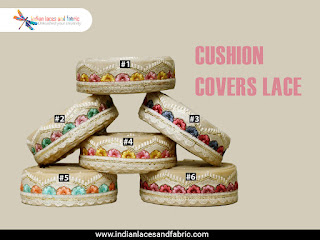Did you know that cushion covers lace used to be the privilege of noble people? Not every home could afford such a luxury. Expensive fabrics and all sorts of decorations were used for sewing.
In the modern world, everyone can buy cushion covers lace with different embellishments. In addition to its aesthetic function, this bedding element also plays an important practical role: it protects the pillow from dirt, sweat, and dust, as well as stains. In the case of feather pillows, a pillowcase is also needed so that the feathers do not crawl out.
Practical value
The protective function is not the only advantage of modern cushion covers lace with embellishments. It is especially important for busy people that cleaning is fast and efficient, so removable covers like nothing else help modern people to cope with this task. The thick fabrics of the pillowcases are easy to dry clean, and the sleeping gear can be quickly and easily cleaned again in the washing machine.
The production of cushion covers provides an ideal opportunity to use remnants of old or unusual materials, from the relatively well-known ones - antique lace, European needle lace, embellishments, or embroidery on canvas, to completely non-standard ones.
Many of these materials are thin and fragile, either initially or from old age, so they need to be strengthened by placing them on a sturdy lining. It is better to sew covers made of non-standard materials in such a way as to remove the valuable part over time, keeping it intact, and either insert it into the frame or use it again for fabric design.
Cushion cover made of ribbons and lace
Ribbons are widely used to decorate garments, tablecloths, napkins, bedspreads, pillows, and sheets. Lace or thin linen trim can turn a simple pillowcase into a miracle. The size of the pillow is determined by the amount of lace or linen you have at your disposal. The pillow is trimmed with ribbons and buttons. In addition to these embellishments and lace, you will need pillowcase fabric, an inner pillow, and a basic set of sewing tools and accessories to make such a pillow. Do not use a zipper in the hem if you are trimming the pillow with lace.
- Part marking - Lay the front piece of the pillowcase face up, mark along the seam line 1.5 cm from the edge of the piece, and mark where the outer tape is sewn parallel to the seam line. Baste the tape. Mark the location of the second, inner ribbon, decorative bows, and buttons using a square, a pen with sympathetic ink, or tailor's chalk.
- Sewing on tape - Pin and baste the framing tape along the marked line to the front of the front piece. Sew with blind stitches along the edge of the tape, cut at the corners with a folded cut, masking the connections.
- Attaching embellishments - Sew on buttons and bows and sew on the pillowcase. Lay the lace along the edge, cut the corners with a folded cut, and sew the ends of the lace at one of the corners.
- Sewing on lace trim - Sew the cushion covers lace around the edge of the pillow by hand, with small blind stitches. Large stitches will not be visible under the lace, but they are very weak and will not hold the finish well. If you've used cute ink, wash the pillowcase and iron it gently, then insert the pillow in the inner cover into it.




0 Comments